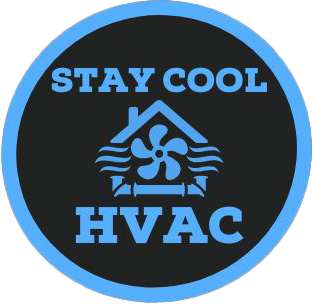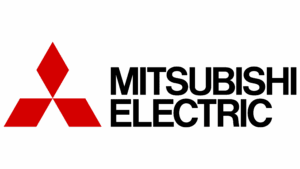Discover the revolutionary technology of ductless heating and cooling systems, providing modern comfort without the need for extensive ductwork. At Stay Cool HVAC, we specialize in a wide range of HVAC services, including split systems, mini splits, package systems, heat pumps, electric heat, air ductwork, and insulation, ensuring year-round comfort for your home or business. Say goodbye to the inconvenience and hassle of traditional ducted systems and embrace the flexibility and efficiency offered by ductless solutions. Whether you’re looking to upgrade your current HVAC system or explore new options for improved comfort, our expert team is here to guide you every step of the way. Experience the convenience and effectiveness of ductless heating and cooling and discover a new level of comfort for your space.
What is Ductless Heating and Cooling?
Ductless heating and cooling systems, also known as mini-split systems, are an innovative and efficient way to heat and cool your home or business without the need for ductwork. These systems consist of an outdoor unit, which houses the compressor and condenser, and one or more indoor units, which deliver conditioned air directly into the space.
Basics of ductless heating and cooling
Ductless heating and cooling systems rely on the same basic principles as traditional heating and cooling systems, but they offer a more flexible and efficient solution. Instead of using ducts to distribute air, ductless systems use refrigerant lines to transfer heat and cool air directly to the indoor units. This eliminates the energy losses that can occur with ductwork and allows for precise temperature control in each individual zone.
How ductless systems work
Ductless systems work by drawing in air from the room and passing it over a coil in the indoor unit. The coil either absorbs heat from the air (in cooling mode) or releases heat into the air (in heating mode). The conditioned air is then distributed back into the room through the fan in the indoor unit. The outdoor unit, which is connected to the indoor unit by refrigerant lines, is responsible for exchanging heat with the outside environment.
Advantages of Ductless Heating and Cooling
Ductless heating and cooling systems offer several advantages over traditional HVAC systems.
Energy efficiency
One of the main advantages of ductless systems is their energy efficiency. Since conditioned air is delivered directly to the intended space, there is no energy loss associated with ductwork. Additionally, ductless systems are equipped with advanced technologies, such as inverter-driven compressors and programmable thermostats, that maximize energy efficiency and reduce energy consumption.
Flexible installation
Ductless systems offer a high level of flexibility when it comes to installation. The absence of ductwork means that these systems can be installed in virtually any space, including older homes or buildings without existing ductwork. The indoor units can be wall-mounted, floor-mounted, or even installed in the ceiling, allowing for optimal placement and discreet design.
Improved indoor air quality
Ductless systems have built-in filters that help improve indoor air quality by removing dust, allergens, and other airborne impurities. Additionally, since there is no ductwork, there is no opportunity for dust or mold to accumulate and circulate through the system. This can be especially beneficial for individuals with respiratory conditions or allergies.
Zoned heating and cooling
Ductless systems provide the option for zoned heating and cooling, allowing you to control the temperature in each individual room or zone. This means that you can customize the comfort level in different areas of your home or business, saving energy and reducing utility costs. Zoning also enables you to turn off units in unused rooms, further increasing energy savings.
Cost savings
Ductless systems can lead to significant cost savings in several ways. The energy efficiency of these systems can result in lower utility bills and reduced energy consumption. Additionally, since ductless systems are easier to install and require less invasive construction, the installation costs are often lower compared to traditional HVAC systems.
Remote control functionality
Most modern ductless systems come with remote control functionality, allowing you to conveniently adjust settings and control the temperature from anywhere in the room. This added convenience enhances the overall user experience and makes it easy to maintain a comfortable indoor environment.
Types of Ductless Heating and Cooling Systems
Ductless heating and cooling systems come in various types to suit different needs and preferences.
Single-zone systems
Single-zone systems consist of one outdoor unit and one indoor unit, making them ideal for heating and cooling a single room or area. These systems are commonly used for additions, converted garages, or rooms with inconsistent heating and cooling.
Multi-zone systems
Multi-zone systems consist of one outdoor unit and multiple indoor units, allowing for independent temperature control in multiple rooms or areas. These systems are suitable for larger spaces or buildings where different areas have unique heating and cooling requirements.
Ceiling cassette systems
Ceiling cassette systems are installed in the ceiling and provide 360-degree airflow throughout the space. These systems are popular in commercial settings, such as offices or retail spaces, where a discreet and uniform air distribution is desired.
Floor-mounted systems
Floor-mounted systems are installed near the floor and are an excellent option for spaces with limited wall or ceiling space. These systems are often used in basements, sunrooms, or areas with large windows.
Wall-mounted systems
Wall-mounted systems are the most common type of ductless systems and can be easily installed on any interior wall. These systems are versatile and suitable for various spaces, such as bedrooms, living rooms, or offices.
Installation of Ductless Heating and Cooling Systems
Proper installation is crucial for ensuring optimal performance and efficiency of ductless heating and cooling systems. The installation process involves several steps.
Determining the best location for indoor units
When determining the best location for indoor units, factors such as airflow, aesthetics, and accessibility need to be considered. The units should be strategically placed to provide even airflow and avoid the obstruction of furniture or other objects.
Sizing and placement of outdoor units
The outdoor unit should be placed in an area with sufficient airflow and proper clearance to ensure efficient operation. Proper sizing of the outdoor unit is essential to match the cooling and heating requirements of the indoor units.
Running refrigerant lines
Refrigerant lines connect the outdoor and indoor units and are responsible for the transfer of heat. These lines should be routed carefully to ensure a proper refrigerant flow and avoid any potential leaks or damage.
Connecting the units
The indoor and outdoor units need to be properly connected to establish the refrigerant flow and electrical connections. This requires the expertise of a trained professional to ensure safety and system functionality.
Insulating the refrigerant lines
Insulating the refrigerant lines helps prevent condensation and energy losses. Proper insulation ensures efficient heat transfer and protects the lines from external factors that could impact system performance.
Maintenance and Care of Ductless Systems
Regular maintenance and care are essential for ensuring the longevity and efficiency of ductless heating and cooling systems.
Cleaning the filters
Cleaning the filters regularly is crucial to maintain optimal airflow and prevent dust and debris buildup. It is recommended to clean or replace the filters every few months, depending on the local air quality and usage.
Regular system check-ups
Annual or bi-annual system check-ups by a trained professional are essential to identify any potential issues or inefficiencies. During these check-ups, the technician will inspect the system, clean the components, and ensure that everything is functioning correctly.
Checking refrigerant levels
Checking the refrigerant levels is important to ensure proper system operation and efficiency. Low refrigerant levels can indicate a leak, which needs to be addressed promptly to prevent further damage or inefficiency.
Replacing batteries in remote controls
Regularly replacing the batteries in remote controls ensures that you can continue to conveniently control the system without any disruptions. Keeping spare batteries on hand is recommended to avoid any downtime.
Keeping outdoor units clear of debris
Regularly clearing the area around the outdoor unit from debris, such as leaves or branches, prevents airflow obstruction and ensures proper heat exchange.
Common Issues and Troubleshooting
Like any HVAC system, ductless heating and cooling systems may experience issues that require troubleshooting. Some common issues include:
System not cooling or heating properly
If the system is not cooling or heating properly, several factors could be to blame, such as clogged filters, refrigerant leaks, or malfunctioning components. A professional technician can help diagnose and resolve the issue.
Strange noises or odors
Unusual noises or odors coming from the system may indicate a problem with the fan, motor, or other components. Immediate attention from a professional is recommended to prevent further damage.
Leaking water from indoor unit
Water leakage from the indoor unit could be a sign of a blocked drain line or a malfunctioning condensate pump. A technician can determine the cause and provide the necessary repairs.
Faulty remote control operation
If the remote control is not working or responding properly, it could be due to battery issues or signal interference. Replacing the batteries or troubleshooting the remote control settings can help resolve the problem.
Power supply issues
If the system is not turning on, there may be a power supply issue. Checking the circuit breaker or contacting an electrician can help identify and resolve any electrical issues.
Comparison with Traditional HVAC Systems
When comparing ductless heating and cooling systems with traditional HVAC systems, several factors come into play.
Differences in ductwork
The most significant difference between the two systems is the presence or absence of ductwork. Traditional HVAC systems rely on a network of ducts to distribute conditioned air, which can lead to energy losses and efficiency issues. Ductless systems eliminate these challenges by delivering air directly to the intended space.
Energy efficiency comparison
Ductless systems are generally more energy-efficient than traditional HVAC systems. The absence of ductwork reduces energy losses, and advanced technologies, such as inverter-driven compressors, further enhance energy efficiency. This can result in lower utility bills and reduced environmental impact.
Installation and maintenance costs
Ductless systems tend to have lower installation and maintenance costs compared to traditional HVAC systems. The absence of ductwork simplifies the installation process and reduces the need for extensive construction. Additionally, the ability to control each indoor unit independently allows for targeted heating and cooling, minimizing energy waste and reducing maintenance requirements.
Overall comfort and convenience
Ductless systems offer a higher level of comfort and convenience compared to traditional HVAC systems. The ability to customize temperature settings in each zone allows for personalized comfort, and the remote control functionality adds an extra layer of convenience. Additionally, the absence of ductwork eliminates issues such as leaks, drafts, or hot spots, ensuring consistent and comfortable indoor conditions.
Choosing the Right Ductless System for Your Needs
To choose the right ductless heating and cooling system for your needs, several factors should be considered.
Determining your heating and cooling requirements
Evaluate the heating and cooling requirements of your space by considering factors such as the size of the area, the number of occupants, and any specific comfort preferences. This will help determine the capacity and number of indoor units needed.
Calculating the number of indoor units needed
Consider the layout and design of your space to determine the number of indoor units needed. Larger areas may require multiple units to ensure even airflow and consistent temperature control.
Consideration of aesthetics and design
Since ductless systems are visible in the space, consider the aesthetics and design of the indoor units. Choose units that blend seamlessly with the interior and complement the overall decor.
Selecting the right brand and model
Research and compare different brands and models to find a ductless system that meets your specific requirements and budget. Consider factors such as energy efficiency ratings, warranty coverage, and the reputation of the manufacturer.
Professional Installation vs. DIY
When it comes to installing ductless heating and cooling systems, you have the option to hire a professional or attempt a DIY installation. Both options come with their own advantages and considerations.
Advantages of professional installation
Professional installation ensures that the system is correctly installed and functioning optimally. Trained technicians have the knowledge and expertise to handle all aspects of the installation process, from proper sizing and placement to connecting the units and insulating the lines. Professional installation also provides peace of mind and ensures compliance with local building codes and regulations.
Considerations for DIY installation
DIY installation can be a more cost-effective option, especially for individuals with experience and knowledge in HVAC systems. However, it is essential to consider the complexity of the installation process and the potential risks of improper installation. DIY installation may void warranties and can lead to inefficiencies, safety issues, or damage to the system.
Importance of proper training and certification
Whether you choose professional installation or opt for a DIY approach, it is crucial to ensure that the individuals involved have the proper training and certification. This ensures that the installation is done safely and in compliance with industry standards.
Conclusion
Ductless heating and cooling systems offer a modern and efficient solution for maintaining comfort in homes and businesses without the need for traditional ductwork. The energy efficiency, flexible installation options, improved indoor air quality, and cost savings make ductless systems an attractive choice for many. Regular maintenance and proper care are essential to ensure optimal performance, and professional installation is recommended to maximize efficiency and safety. The future of ductless heating and cooling looks promising, as advancements in technology continue to improve energy efficiency and overall comfort. By choosing the right ductless system for your needs and maximizing its capabilities, you can enjoy enhanced comfort and energy efficiency in your indoor spaces.



